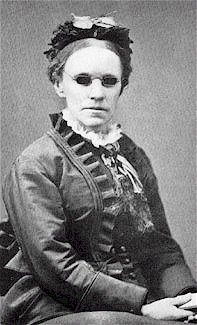 What is “joy”?
What is “joy”?
We often equate joy with feelings of happiness, and too frequently base those feelings on our circumstances or temporary conditions. True joy, however, is found not in things, but in the maker of things. This lesson’s featured faith giant knew that truth quite well, and lived in effort to communicate it to others through her prolific production of hymns. Today Fanny Crosby is well known and loved for her words, which now fill our hymnals and (hopefully) our church services.
Lesson focus: Fanny Crosby set a remarkable and encouraging example of joy in every circumstance and contentment in God; we can experience genuine joy when we make God’s pleasure our own, and we are in fact commanded to be joyful.
Bible Passages:
Worship the Lord with gladness; come before him with joyful songs. -Psalm 100:2
Consider it pure joy, my brothers and sisters,[a] whenever you face trials of many kinds, 3 because you know that the testing of your faith produces perseverance. -James 1:2-3
Rejoice in the Lord always. I will say it again: Rejoice! -Philippians 4:4
Target Audience: Pre-k through fifth grade (adaptable)
Materials Needed: Recordings of hymns; printed lyrics; paper plates, dried noodles, streamers
Throughout the lesson, consider sprinkling in verses or tunes from some of Crosby’s best-loved songs. If it is not too distracting, play tunes in the background or have students pause to sing parts of the songs.
Lesson Opening: Open the lesson with a few recordings of some old hymns written by Fanny Crosby. Provide students with paper and drawing materials and encourage them to create an illustration of something beautiful or joyful. Play another song with similar instructions, only have the artists draw blindfolded. Is it tough to think of happy things without using your vision? What else would be challenging about not being able to see?
Lesson:
The faith giant we are exploring today is Frances Jane Van Alstyne, more widely known as Fanny Crosby. Crosby is responsible for literally thousands of hymns, as well as many poems and even some political and patriotic songs. Joyful and hardworking throughout her life, Fanny was never slowed or deterred by the fact that she was blind nearly from birth. In fact, she often emphasized how grateful she was for her condition, explaining that upon arrival in Heaven, the first face she would gaze upon would be the Savior’s. Crosby exemplified a life lived with rejoicing in each present moment. She could easily have succumbed to hardship or wallowed in self-pity, but instead devoted her life to service and worship. Consider some of the poignant details of Crosby’s life:
- Fanny Crosby (1820-1915) lived most of her life in and around New York. She was blind since infancy and was educated at the New York Institute for the Blind, where she also taught.
- Crosby was friends with a young Grover Cleveland (later president)
- At the age of 38 Fanny married a man named Alexander Van Alstyne. They had one daughter who died shortly after birth.
- Fanny Crosby wrote so many hymns that she had to use pseudonyms so that hymnals would not be overrun with her name.
- In addition to hymn-writing, Crosby wrote poems and also helped with political writing.
- Fanny Crosby did a lot of social work in her life, assisting rescue missions and guiding the poor. This inspired several of her songs.
- In all of her work, Fanny committed to her faith and maintained necessity for prayer and devotion to God. Through joy and sorrow she clung to Christ for inspiration.
- Fanny Crosby died at age 94. On her small tombstone were carved the words “Aunt Fanny. She hath done what she could.”
Some of Fanny Crosby’s most notable hymns include “Blessed Assurance,” “All the Way my Savior Leads me,” “To God be the Glory,” “Pass me Not, oh Gentle Savior,” “Rescue the Perishing,” “Tell me the Story of Jesus,” and many more.
Remind students of Fanny’s legacy of joy. She was known in some areas as the “happiest creature in all the land” and criticized those who tried to express pity for her blindness. Joy is something we are commanded to express. It is not mere happiness or good mood cheer. Authentic joy is based on knowing that God has given us all we have and loves us. We can rejoice every day because it is a day the Lord has made.
Craft: Make musical instruments to shake and give thanks with joy. Have students decorate two paper plates, and fill the middle with pasta noodles. Attach streamer ribbons in varying colors and staple the outside to secure the noodles. Make sure to include a caption such as a verse, song, or “This is the Day the Lord has made.” Encourage kids to make a joyful noise with their handmade tambourines.
Close with prayer and thank God for all He has given. Ask for genuine joy and gratitude in all things, knowing that every blessing is of God.
But the fruit of the Spirit is love, joy, peace, forbearance, kindness, goodness, faithfulness, 23 gentleness and self-control. Against such things there is no law. -Galatians 5:22-23
I know what it is to be in need, and I know what it is to have plenty. I have learned the secret of being content in any and every situation, whether well fed or hungry, whether living in plenty or in want. -Philippians 4:12

God bless you all for what you are doing, may Jesus writes your names in the book of the eternal life when he comes